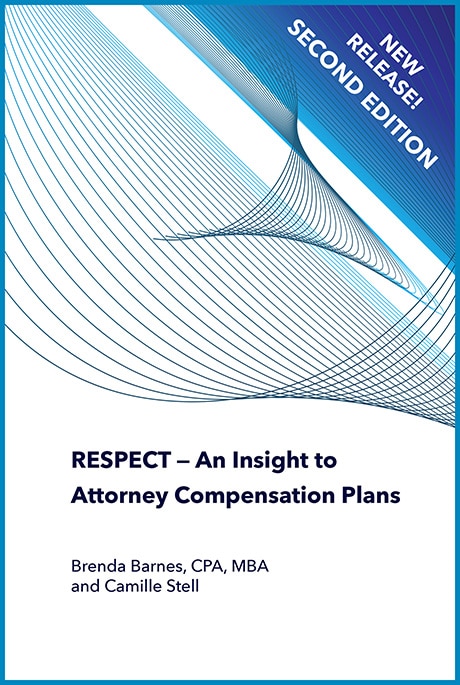When was the last time your law firm took a hard look at its compensation system — not just the numbers, but the process behind them? For most firms, compensation is one of the biggest expenses and one of the most powerful management tools. It affects morale, motivation, retention and culture. Yet in many law firms, it’s also one of the least examined systems. This oversight is precisely why every firm needs to consider scheduling a law firm compensation audit.

Table of contents
- Why Your Law Firm Needs a Compensation Audit
- What Is a Compensation Audit?
- Why Do a Compensation Audit?
- How to Conduct a Compensation Audit
- The Most Common Problems Uncovered During Law Firm Compensation Audits
- How Firms Address What They Find in the Audit
- Building a Continuous Compensation Strategy
- The Payoff of a Compensation Audit
- Related Reading on Lawyer Compensation
Why Your Law Firm Needs a Compensation Audit
A compensation audit offers a structured way to review how your law firm pays its people, why those decisions are made, and whether the results align with your goals and values. Just as firms routinely audit trust accounts, malpractice exposure and client files, they should periodically audit their compensation practices.
A good law firm compensation audit can uncover hidden inequities, outdated practices and blind spots that quietly undermine your culture and competitiveness. More importantly, it can help you build fairness, clarity, and credibility into one of your firm’s most sensitive areas and most valuable systems.
What Is a Compensation Audit?
A compensation audit is a formal review of your firm’s pay practices, including not just salaries, but also bonuses, benefits, and partnership compensation. The goal is to assess whether your system is fair, consistent, competitive, and aligned with your firm’s mission.
An audit typically covers:
- Base salaries and bonus structures for all positions
- Partner draws, origination and management credit, and equity allocations
- Benefits and perks (including hybrid work arrangements, technology stipends, and profit sharing)
- Written compensation policies versus actual practice
- Market competitiveness (how your pay compares to peers or regional norms)
- Internal equity (how pay compares among similar roles or performance levels)
Depending on firm size, the audit may be handled internally by HR and management or externally by a consultant. Ideally, firms perform a major audit every two to three years and a lighter “checkup” annually.
Why Do a Compensation Audit?
Law firms that conduct regular compensation audits report benefits that extend far beyond pay itself. Here’s why it matters.
1. To Mitigate Legal and Reputational Risk
Pay transparency and equal pay laws are expanding rapidly across the country. Even if your firm is not yet in a state with a formal pay transparency statute, your candidates are likely seeing public salary ranges on job boards.
A proactive compensation audit helps you identify and correct inequities before they create legal exposure — or before your next associate sees your competitor’s higher salary range online and starts polishing their resume.
2. To Retain and Engage Talent
Few things erode trust faster than unexplained pay differences. Compensation audits demonstrate your commitment to fairness and help you explain how pay decisions are made. This is especially important for younger attorneys who expect transparency and career path clarity.
3. To Stay Competitive in the Market
Many firms discover during an audit that their salaries lag the market by 10-20%. This isn’t intentional, it’s simply the result of not revisiting pay scales in years. Regular benchmarking helps you remain attractive to both lateral hires and loyal team members.
4. To Align Compensation with Firm Strategy
If your firm’s goals include collaboration, client development, and mentoring, but your compensation plan rewards only billable hours, there’s a disconnect. A compensation audit ensures your system encourages the right behaviors.
5. To Strengthen Culture and Trust
Pay fairness is foundational to culture. Employees don’t need everyone’s salary to be public, but they do need to know the system is fair and that performance and contribution matter. Pay bands are a great way to share salary information without identifying specific circumstances.
How to Conduct a Compensation Audit
While every firm’s audit process looks different, most follow six basic steps.
Step 1: Gather the Data
Collect detailed data on base pay, bonuses, benefits, and discretionary payments for the past few years. Include origination credit, client management credit, and billable hour data.
If your records are scattered across spreadsheets and emails, that’s a red flag in itself. Centralizing your data is the first step toward consistency.
Step 2: Review Policies and Procedures
Pull out your written compensation policies, if you have them, and compare them to how compensation is actually administered.
For example, your policy might state that the firm bases raises on performance reviews, but in practice, they are often determined informally or inconsistently, and performance reviews are rarely scheduled. Identifying these gaps is one of the audit’s biggest benefits.
Step 3: Benchmark Against the Market
Use multiple data points:
- The National Association for Law Placement (NALP) salary surveys.
- State and local bar association salary surveys, as well as surveys conducted by the Association of Legal Administrators (ALA) and the Legal Marketing Association (LMA).
- National recruiting firms’ surveys and reports. National firms often produce salary surveys and may include a breakdown by geographic area nationwide. Local recruiting firms are often willing to share information, especially with law firms that are willing to build relationships with them.
- Law school career service departments. Here, personal relationships are also key. Take time to build reciprocal relationships with the law schools in your state. Be willing to come to the law school to interview students. Even if your firm can’t hire law students on a regular basis, you can participate in mock interviews to help students build skills. Or, participate in other ways that connect you to the law school’s students, faculty and administration.
- Online platforms like Glassdoor, Indeed or LawCrossing.
- Informal benchmarking with peer firms. Be cautious about antitrust issues. Discuss methodology, trends, challenges and solutions, not actual numbers.
The goal is not to match “BigLaw” salaries, but to confirm your firm is positioned appropriately for its size, market and practice mix.
Step 4: Analyze Patterns
Look for trends across key dimensions:
- Role and seniority
- Practice area
- Gender, race, and age (for pay equity analysis)
- Tenure and productivity
- Full-time vs. part-time vs. flexible or hybrid arrangements
Anomalies don’t automatically mean discrimination or unfairness, but they do warrant explanation.
Step 5: Discuss and Interpret Findings
Leadership, HR or your consultant should review the findings confidentially, focusing on themes and systems rather than individuals. Ask:
- Where are we inconsistent?
- Where are we out of sync with our stated goals or market norms?
- Which issues require immediate correction versus long-term planning?
Step 6: Develop and Implement an Action Plan
Your plan may include pay adjustments, clearer documentation, updated policies, or new communication practices. Build in checkpoints for accountability and review progress annually.
The Most Common Problems Uncovered During Law Firm Compensation Audits
Once you’ve completed the six steps of your compensation audit, the real insights begin to emerge. The data you’ve gathered will start telling stories about how decisions are made, who benefits most, and where inconsistencies may have crept in over time. Patterns that seemed minor in day-to-day operations often become clear when viewed through the audit lens. Many firms discover that their biggest challenges aren’t about numbers at all, but about process, communication and culture.
Here are some of the most common problems revealed during law firm compensation audits, and how firms address them.
1. Inconsistency Between Policy and Practice
Perhaps your policy says “merit-based raises,” but raises actually depend on who asks, who manages the employee, or how loudly they advocate.
Fix: Create transparent criteria and apply them consistently. Communicate the decision-making process so people understand how compensation decisions are made, even if they don’t know every number.
2. Unintended Pay Gaps
Even firms with strong values can discover gender, generational, or racial pay disparities. Often the cause is cumulative — for example, one associate started lower years ago and percentage raises kept the gap intact.
Fix: Conduct a pay equity analysis and make targeted adjustments. Going forward, include equity checks in every annual review cycle to prevent gaps from re-emerging.
3. Origination Credit Disputes
Few topics generate more tension than origination credit. A partner who originated a client a decade ago may still receive credit even though others manage the relationship daily.
Fix: Revisit your origination credit policy. Many firms are adopting shared credit systems or hybrid models that reward both origination and ongoing relationship management. Sunsetting origination credit indicates that a client is now considered an institutional client of the firm. Such a move encourages teamwork and succession planning.
4. Outdated Salary Scales
Some firms discover their salaries haven’t been reviewed in years. Meanwhile, competitors have raised associate pay to attract talent. Under-market pay leads to turnover, morale problems, and hiring challenges.
Fix: Benchmark annually. If your pay is below market, develop a phased plan to close the gap and communicate it clearly to staff and associates.
5. Bonus Systems That Miss the Mark
When bonuses are tied solely to billable hours, they often ignore other critical contributions such as mentoring, teamwork, leadership, or community involvement.
Fix: Broaden bonus criteria to reflect firm values. Create a matrix (or a bonus scorecard) that includes both billable performance and qualitative contributions. This sends a powerful message about what your firm rewards.
6. Partner Compensation Disparities
For equity partners, compensation can be the most emotionally charged issue within the firm. When formulas are opaque or outdated, resentment builds. For lawyers, money equals respect. While data and spreadsheets are key to creating a solid plan, you can’t ignore the emotional aspects of compensation – feelings of being valued, respected, and a trusted member of the team.
Fix: Review your partner compensation model — whether it’s lockstep, formula-based, or subjective. Transparency and trust are more important than any particular model. Many firms bring in an outside facilitator to help partners revisit their system objectively.
7. Lack of Documentation
Perhaps the most common problem is the absence of documentation. Decisions are made verbally, rationale isn’t recorded, and years later, no one remembers why certain adjustments were made.
Fix: Document every compensation decision. Keep written summaries explaining the rationale for raises and bonuses. Documentation protects the firm and supports transparency.
8. The “Benevolent Dictator” Problem
Some firms operate under what’s often called the “benevolent dictator” model, where a founding or managing partner unilaterally decides who gets paid what, often with good intentions. At first, this can feel efficient and even generous. Over time, however, it tends to create inequities and resentment. Underperforming partners may continue to receive above-market draws out of loyalty or historical precedent, while stronger performers shoulder a disproportionate share of the workload or overhead. The lack of transparency discourages accountability and succession planning. When one person controls the purse strings, few others understand the firm’s economics, and there is no incentive for others to learn and become more involved.
Fix: Transition from a single-decision-maker model to a structured, participatory compensation system. Create a compensation or management committee with clear, written criteria for partner contributions, including billable work, client development, management, and mentoring. Introduce periodic performance reviews and financial transparency so all partners understand the firm’s economics. When the process moves from personality-based to principle-based, the firm becomes stronger, fairer, and more sustainable.
How Firms Address What They Find in the Audit
Once you’ve identified the issues, the next challenge is following through. Successful firms treat the audit as the beginning of change, not the end.
- Conduct annual “mini-audits.” Review a sample of salaries and bonuses each year to catch trends early.
- Revise policies and communicate clearly. Put your compensation principles in writing and share them firmwide.
- Leverage technology. HR systems can flag anomalies and produce real-time pay reports.
- Train managers and partners. Supervisors should understand both the policies and the legal context of pay decisions.
- Create an internal compensation committee. This group can oversee consistency, fairness, and compliance going forward.
- Monitor morale. Ask for feedback after changes. If employees understand why the firm made adjustments, they’re more likely to buy in.
Building a Continuous Compensation Strategy
The best firms move beyond the one-time audit to create an ongoing compensation strategy.
- Integrate Compensation with Strategy. Your pay plan should support your firm’s business goals – whether that’s growth, succession, or stability.
- Encourage Transparency Where Appropriate. Full public disclosure isn’t necessary, but transparency about process builds trust.
- Connect Compensation to Succession Planning. Origination credit, client handoffs, and leadership transitions should all be considered part of the compensation discussion.
- Maintain Your Own Salary Database. Start tracking salary data whenever you hire, promote or lose an attorney. When someone leaves, ask what influenced their decision — salary may be a key factor. When you see job postings with listed salary ranges, add them to your internal file. Over time, you’ll build a firm-specific database more valuable than any outside survey.
- Review Compensation Alongside DEI Goals. Compensation fairness is a measurable, tangible way to demonstrate commitment to equity and inclusion.
- Celebrate Improvements. When the audit leads to clearer policies or fairer pay, communicate those wins internally. It reinforces trust and engagement.
The Payoff of a Compensation Audit
A well-executed compensation audit brings clarity, fairness, and strategy to one of the most complex areas of firm management. It allows you to identify blind spots before they become problems, strengthen your culture, and align pay with your mission.
Think of it as preventive maintenance — a routine checkup that keeps your firm healthy.
A compensation audit isn’t about assigning blame. It’s about ensuring that how you reward people reflects who you are as a firm. When pay systems are fair, transparent and strategic, everyone benefits — your lawyers, your staff, your clients and your bottom line.

RESPECT: An Insight to Attorney Compensation Plans
Newly updated with more case studies.
Do you want to know more about designing and implementing compensation systems to grow and scale your law firm? Brenda Barnes and Camille Stell have written a go-to guide on attorney compensation trends and best practices for small to midsize law firms. Available at lawofficemanagementbooks.com and Amazon.
Related Reading on Lawyer Compensation
- “Black Box” Comp Plans vs. Percentage-Based Comp Plans by Erik Mazzone
- Everything You Need to Know About Modern Compensation Plans by Alexandra David
- Best Compensation Plans Follow the Rule of Thirds by Brooke Lively
- How Are Law Firm Owners Paid? by Brooke Lively
Image © iStockPhoto.com.

Sign up for Attorney at Work’s daily practice tips newsletter here and subscribe to our podcast, Attorney at Work Today.
















